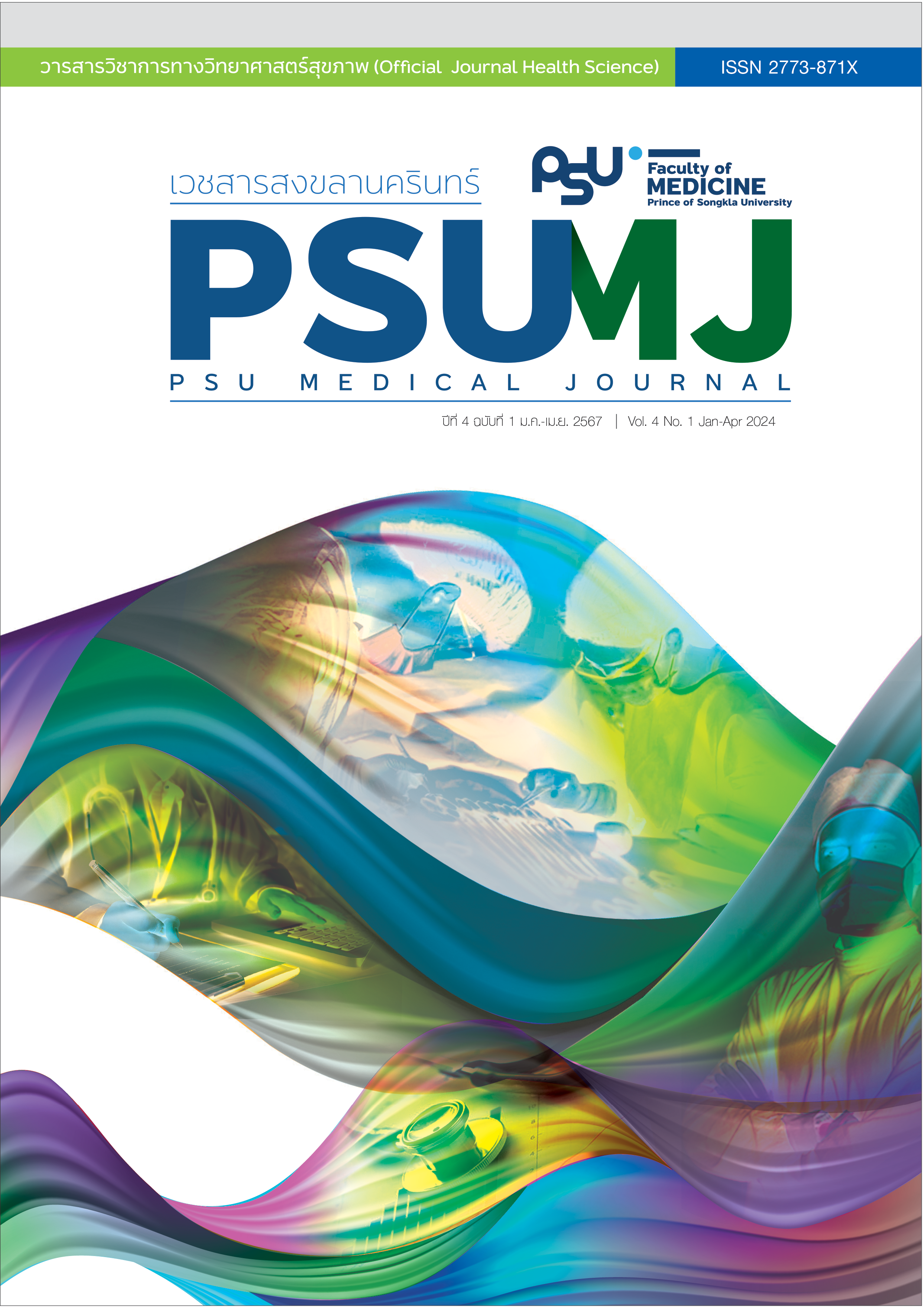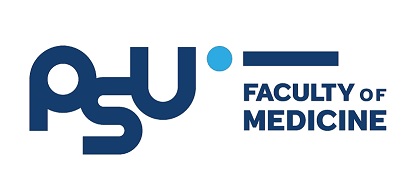Pancreatic Fistula after Pancreatoduodenectomy: Evaluation of Different Surgical Techniques
DOI:
https://doi.org/10.31584/psumj.2024263821Keywords:
pancreatic fistula, pancreatoduodenectomy, surgical techniquesAbstract
Postoperative pancreatic fistula (POPF) is one of the most fatal complications of pancreatoduodenectomy. POPF is caused by leakage of pancreatic juice from the pancreatic anastomosis into the abdomen, leading to intra-abdominal complications, such as severe surgical site infections, significant postoperative hemorrhage and multi-organ failure. Many risk factors for POPF have been identified, including patient and surgical technique factors. Our objective was to review the literature on surgical techniques to prevent POPF after pancreatoduodenectomy. Pancreatogastrostomy (PG) has the same incidence of POPF as pancreatojejunostomy (PJ). For PJ anastomosis, the interrupted suture and Blumgart technique also had the same rate of POPF. For soft pancreas it was shown that invagination was better than duct-to-mucosa anastomosis to prevent the POPF. However, a pancreatic duct stent cannot decrease the rate of POPF over the non-stent group. Intraperitoneal drainage cannot prevent POPF, however, it can detect POPF more than the non-drain group. Laparoscopic PD (LPD) and robotic-assisted PD (RAPD) were comparable in rates of POPF with open PD. Overall, no conclusion has been reached regarding the best surgical technique. In any individual case, the surgical technique should be selected based on the surgeon’s experience in reducing the incidence of POPF, and other complications.
References
Kimura W, Miyata H, Gotoh M, Hirai I, Kenjo A, Kitagawa Y, et al. A pancreaticoduodenectomy risk model derived from 8575 cases from a national single-race population (Japanese) using a web-based data entry system: the 30-day and in-hospital mortality rates for pancreaticoduodenectomy. Ann Surg 2014;259:773-80.
Bassi C, Marchegiani G, Dervenis C, Sarr M, Abu Hilal M, Adham M, et al. International study group on pancreatic surgery (ISGPS). the 2016 update of the international study group (ISGPS) definition and grading of postoperative pancreatic fistula: 11 years after. Surgery 2017;161:584-91.
Cameron JL, He J. Two thousand consecutive pancreaticoduodenectomies. J Am Coll Surg 2015;220:530-6.
Aoki S, Miyata H, Konno H, Gotoh M, Motoi F, Kumamaru H, et al. Risk factors of serious postoperative complications after pancreaticoduodenectomy and risk calculators for predicting postoperative complications: a nationwide study of 17,564 patients in Japan. J Hepato-Biliary-Pancreat Sci 2017;24:243–51.
Fu SJ, Shen SL, Li SQ, Hu WJ, Hua YP, Kuang M, et al. Risk factors and outcomes of postoperative pancreatic fistula after pancreaticoduodenectomy: an audit of 532 consecutive cases. BMC Surg 2015;15:34.
Nakata K, Mori Y, Ikenaga N, Ideno N, Watanabe Y, Miyasaka Y, et al. Management of postoperative pancreatic fistula after pancreatoduodenectomy: analysis of 600 cases of pancreatoduodenectomy patients over a 10-year period at a single institution. Surgery 2021;169:1446–53.
Bassi C, Dervenis C, Butturini G, Fingerhut A, Yeo C, Izbicki J, et al. International study group on pancreatic fistula definition. postoperative pancreatic fistula: an international study group (ISGPF) definition. Surgery 2005;138:8-13.
Chen BP, Bennett S, Bertens KA, Balaa FK, Martel G. Use and acceptance of the international study group for pancreatic fistula (ISGPF) definition and criteria in the surgical literature. HPB 2018;20:69–75.
Hu BY, Wan T, Zhang WZ, Dong JH. Risk factors for postoperative pancreatic fistula: analysis of 539 successive cases of pancreaticoduodenectomy. World J Gastroenterol 2016;22:7797–805.
Ke Z, Cui J, Hu N, Yang Z, Chen H, Hu J, et al. Risk factors for postoperative pancreatic fistula. Medicine (Baltimore) 2018;97:e12151.
Zhang B, Yuan Q, Li S, Xu Z, Chen X, Li L, et al. Risk factors of clinically relevant postoperative pancreatic fistula after pancreaticoduodenectomy: a systematic review and meta-analysis. Medicine (Baltimore) 2022;101:e29757.
Ellis RJ, Brock Hewitt D, Liu JB, Cohen ME, Merkow RP, Bentrem DJ, et al. Preoperative risk evaluation for pancreatic fistula after pancreaticoduodenectomy. J Surg Oncol 2019;119:1128–34.
Kiełbowski K, Bakinowska E, Uciński R. Preoperative and intraoperative risk factors of postoperative pancreatic fistula after pancreaticoduodenectomy – systematic review and meta-analysis. Pol J Surg 2021;93:1–10.
Grendar J, Ouellet JF, Sutherland FR, Bathe OF, Ball CG, Dixon E. In search of the best reconstructive technique after pancreaticoduodenectomy: pancreaticojejunostomy versus pancreaticogastrostomy. Can J Surg 2015;58:154–9.
Keck T, Wellner UF, Bahra M, Klein F, Sick O, Niedergethmann M, et al. Pancreatogastrostomy versus pancreatojejunostomy for RECOnstruction after PANCreatoduodenectomy (RECOPANC, DRKS 00000767). Ann Surg 2016;263:440–9.
Ricci C, Casadei R, Taffurelli G, Pacilio CA, Beltrami D, Minni F. Is pancreaticogastrostomy safer than pancreaticojejunostomy after pancreaticoduodenectomy? a meta-regression analysis of randomized clinical trials. Pancreatology 2017;17:805-13.
Lyu Y, Li T, Cheng Y, Wang B, Chen L, Zhao S. Pancreaticojejunostomy versus pancreaticogastrostomy after pancreaticoduodenectomy: an up-to-date meta-analysis of RCTs Applying the ISGPS (2016) Criteria. Surg Laparosc Endosc Percutan Tech 2018;28:39-146.
Kakita A, Takahashi T, Yoshida M, Furuta K. A simpler and more reliable technique of pancreatojejunal anastomosis. Surg Today 1996;26:532-5.
Kleespies A, Rentsch M, Seeliger H, Albertsmeier M, Jauch KW, Bruns CJ. Blumgart anastomosis for pancreaticojejunostomy minimizes severe complications after pancreatic head resection. Br J Surg 2009;96:741–50.
Fujii T, Sugimoto H, Yamada S, Kanda M, Suenaga M, Takami H, et al. Modified Blumgart anastomosis for pancreaticojejunostomy: technical improvement in matched historical control study. J Gastrointest Surg 2014;18:1108–15.
Oda T, Hashimoto S, Miyamoto R, Shimomura O, Fukunaga K, Kohno K, et al. The tight adaptation at pancreatic anastomosis without parenchymal laceration: an institutional experience in introducing and modifying the new procedure. World J Surg 2015;39:2014–22.
Kawakatsu S, Inoue Y, Mise Y, Ishizawa T, Ito H, Takahashi Y, et al. Comparison of pancreatojejunostomy techniques in patients with a soft pancreas: Kakita anastomosis and Blumgart anastomosis. BMC Surg 2018;18:88.
Lee YN, Kim WY. Comparison of Blumgart versus conventional duct-to-mucosa anastomosis for pancreaticojejunostomy after pancreaticoduodenectomy. Ann Hepato-Biliary-Pancreat Surg 2018;22:253–60.
Satoi S, Yamamoto T, Yanagimoto H, Yamaki S, Kosaka H, Hirooka S, et al. Does modified blumgart anastomosis without intra-pancreatic ductal stenting reduce post-operative pancreatic fistula after pancreaticojejunostomy?. Asian J Surg 2019;42:343–9.
Hirono S, Kawai M, Okada KI, Miyazawa M, Kitahata Y, Hayami S, et al. Modified Blumgart mattress suture versus conventional interrupted suture in pancreaticojejunostomy during pancreaticoduodenectomy: randomized controlled trial. Ann Surg 2019;269:243.
Li Z, Wei A, Xia N, Zheng L, Yang D, Ye J, et al. Blumgart anastomosis reduces the incidence of pancreatic fistula after pancreaticoduodenectomy: a systematic review and meta-analysis. Sci Rep 2020;10:17896.
Ricci C, Ingaldi C, Alberici L, Pagano N, Mosconi C, Marasco G, et al. Blumgart anastomosis after pancreaticoduodenectomy. a comprehensive systematic review, meta-analysis, and meta-regression. World J Surg 2021;45:1929–39.
Bai X, Zhang Q, Gao S, Lou J, Li G, Zhang Y, et al. Duct-to-mucosa vs invagination for pancreaticojejunostomy after pancreaticoduodenectomy: a prospective, randomized controlled trial from a single surgeon. J Am Coll Surg 2016;222:10-8.
Senda Y, Shimizu Y, Natsume S, Ito S, Komori K, Abe T, et al. Randomized clinical trial of duct-to-mucosa versus invagination pancreaticojejunostomy after pancreatoduodenectomy. Br J Surg 2017;105:48–57.
Zhang S, Lan Z, Zhang J, Chen Y, Xu Q, Jiang Q, et al. Duct-to-mucosa versus invagination pancreaticojejunostomy after pancreaticoduodenectomy: a meta-analysis. Oncotarget 2017;8:46449–60.
Lyu Y, Li T, Wang B, Cheng Y, Zhao S. Selection of pancreaticojejunostomy technique after pancreaticoduodenectomy: duct-to-mucosa anastomosis is not better than invagination anastomosis. Medicine (Baltimore) 2018;97:e12621.
Cao Z, Luo W, Qiu J, Liu Y, Zheng L, Zhang T. Is invagination anastomosis more effective in reducing clinically relevant pancreatic fistula for soft pancreas after pancreaticoduodenectomy under novel fistula criteria: a systematic review and meta-analysis. Front Oncol 2020;10:1637.
Bin X, Lian B, Jianping G, Bin T. Comparison of patient outcomes with and without stenting tube in pancreaticoduodenectomy. J Int Med Res 2018;46:403–10.
Singh K, Kaman L, Tandup C, Raypattanaik N, Dahiya D, Behera A. Internal stenting across the pancreaticojejunostomy anastomosis and main pancreatic duct after pancreaticoduodenectomy. Pol Przegl Chir 2021;93:1-5.
Shin YC, Jang JY, Chang YR, Jung W, Kwon W, Kim H, et al. Comparison of long-term clinical outcomes of external and internal pancreatic stents in pancreaticoduodenectomy: randomized controlled study. HPB 2019;21:51–9.
Cai H, Lu F, Zhang M, Cai Y, Wang X, Li Y, et al. Pancreaticojejunostomy without pancreatic duct stent after laparoscopic pancreatoduodenectomy: preliminary outcomes from a prospective randomized controlled trial. Surg Endosc 2022;36:3629-36.
Guo C, Xie B, Guo D. Does pancreatic duct stent placement lead to decreased postoperative pancreatic fistula rates after pancreaticoduodenectomy? a meta-analysis. Int J Surg 2022;103:106707.
Di Carlo V, Chiesa R, Pontiroli AE, Carlucci M, Staudacher C, Zerbi A, et al. Pancreatoduodenectomy with occlusion of the residual stump by Neoprene injection. World J Surg 1989;13:105-11.
Tran K, Van Eijck C, Di Carlo V, Hop WCJ, Zerbi A, Balzano G, et al. Occlusion of the pancreatic duct versus pancreaticojejunostomy: a prospective randomized trial. Ann Surg 2002;236:422–8.
Mazzaferro V, Virdis M, Sposito C, Cotsoglou C, Droz Dit Busset M, Bongini M, et al. Permanent pancreatic duct occlusion with neoprene-based glue injection after pancreatoduodenectomy at high risk of pancreatic fistula: a prospective clinical study. Ann Surg 2019;270:791.
Chierici A, Frontali A, Granieri S, Facciorusso A, de’ Angelis N, Cotsoglou C. Postoperative morbidity and mortality after pancreatoduodenectomy with pancreatic duct occlusion compared to pancreatic anastomosis: a systematic review and meta-analysis. HPB 2022;24:1395–404.
Van Buren GI, Bloomston M, Hughes SJ, Winter J, Behrman SW, Zyromski NJ, et al. A randomized prospective multicenter trial of pancreaticoduodenectomy with and without routine intraperitoneal drainage. Ann Surg 2014;259:605.
Witzigmann H, Diener MK, Kienkötter S, Rossion I, Bruckner T, Bärbel Werner, et al. No need for routine drainage after pancreatic head resection: the dual-center, randomized, controlled PANDRA trial (ISRCTN04937707). Ann Surg 2016;264:528-37.
Xourafas D, Ejaz A, Tsung A, Dillhoff M, Pawlik TM, Cloyd JM. Validation of early drain removal after pancreatoduodenectomy based on modified fistula risk score stratification: a population-based assessment. HPB 2019;21:1303–11.
Dokmak S, Ftériche FS, Aussilhou B, Bensafta Y, Lévy P, Ruszniewski P, et al. Laparoscopic pancreaticoduodenectomy should not be routine for resection of periampullary tumors. J Am Coll Surg 2015;220:831-8.
Palanivelu C, Senthilnathan P, Sabnis SC, Babu NS, Srivatsan Gurumurthy S, Anand Vijai N, et al. Randomized clinical trial of laparoscopic versus open pancreatoduodenectomy for periampullary tumours. Br J Surg 2017;104:1443–50.
Poves I, Burdío F, Morató O, Iglesias M, Radosevic A, Ilzarbe L, et al. Comparison of perioperative outcomes between laparoscopic and open approach for pancreatoduodenectomy: the PADULAP randomized controlled trial. Ann Surg 2018;268:731.
Nassour I, Wang SC, Porembka MR, Yopp AC, Choti MA, Augustine MM, et al. Robotic versus laparoscopic pancreaticoduodenectomy: a NSQIP analysis. J Gastrointest Surg 2017;21:1784-92.
Kantor O, Pitt HA, Talamonti MS, Roggin KK, Bentrem DJ, Prinz RA, et al. Minimally invasive pancreatoduodenectomy: is the incidence of clinically relevant postoperative pancreatic fistula comparable to that after open pancreatoduodenectomy? Surgery 2018;163:587–93.
Kim HS, Kim H, Kwon W, Han Y, Byun Y, Kang JS, et al. Perioperative and oncologic outcome of robot-assisted minimally invasive (hybrid laparoscopic and robotic) pancreatoduodenectomy: based on pancreatic fistula risk score and cancer/staging matched comparison with open pancreatoduodenectomy. Surg Endosc 2021;20:364–9.
Downloads
Published
How to Cite
Issue
Section
License
Copyright (c) 2024 Author and Journal

This work is licensed under a Creative Commons Attribution-NonCommercial-NoDerivatives 4.0 International License.








